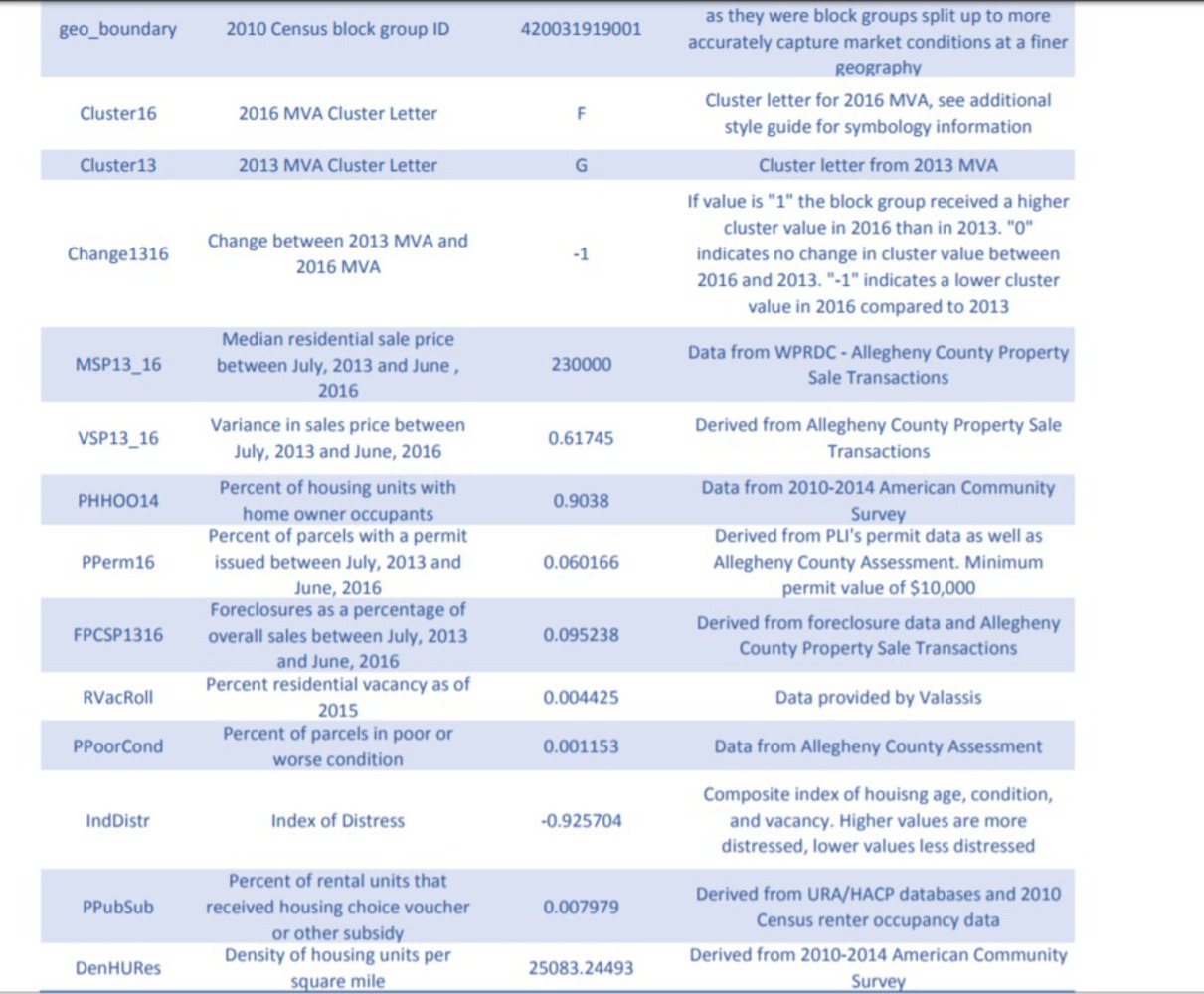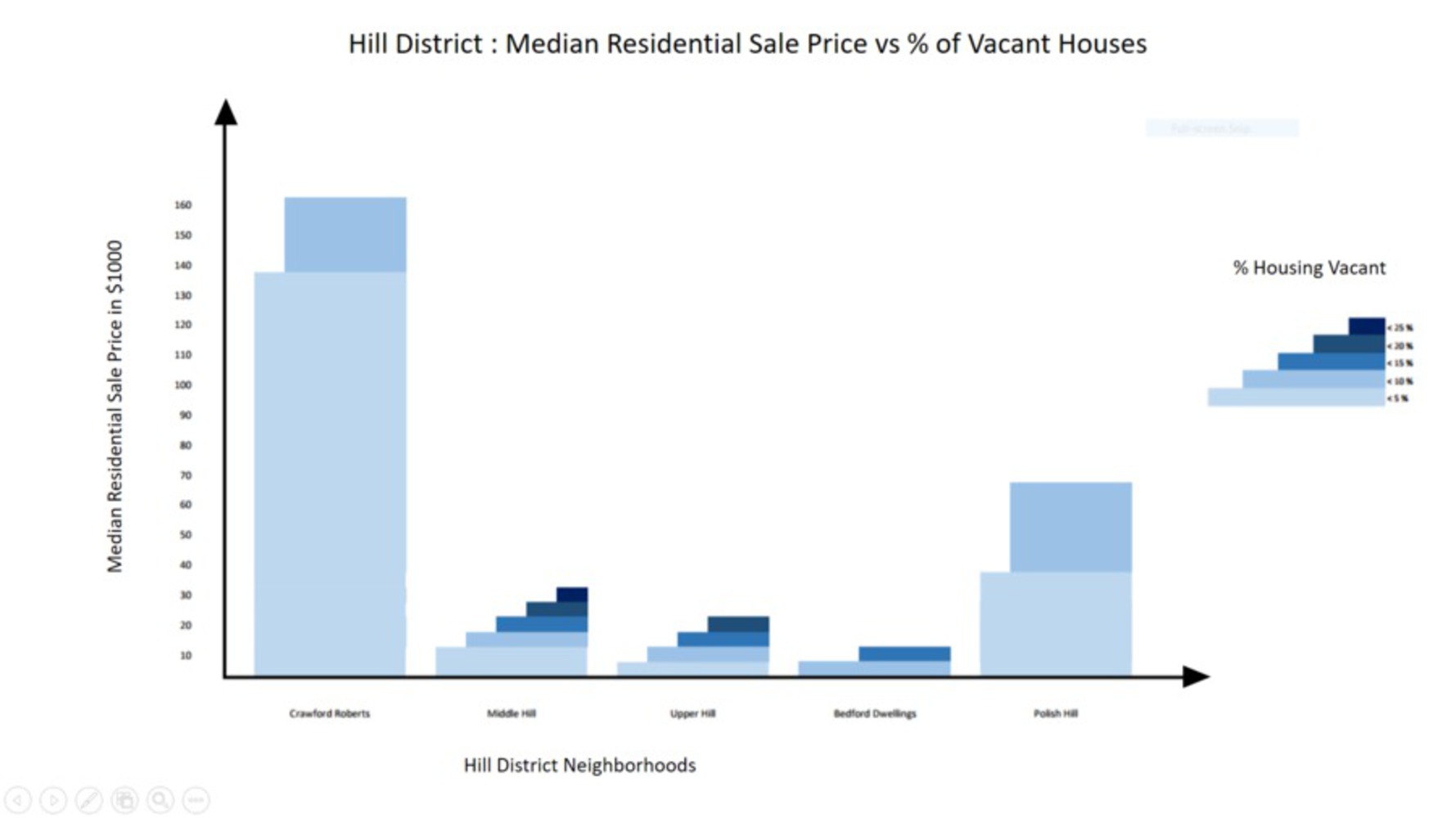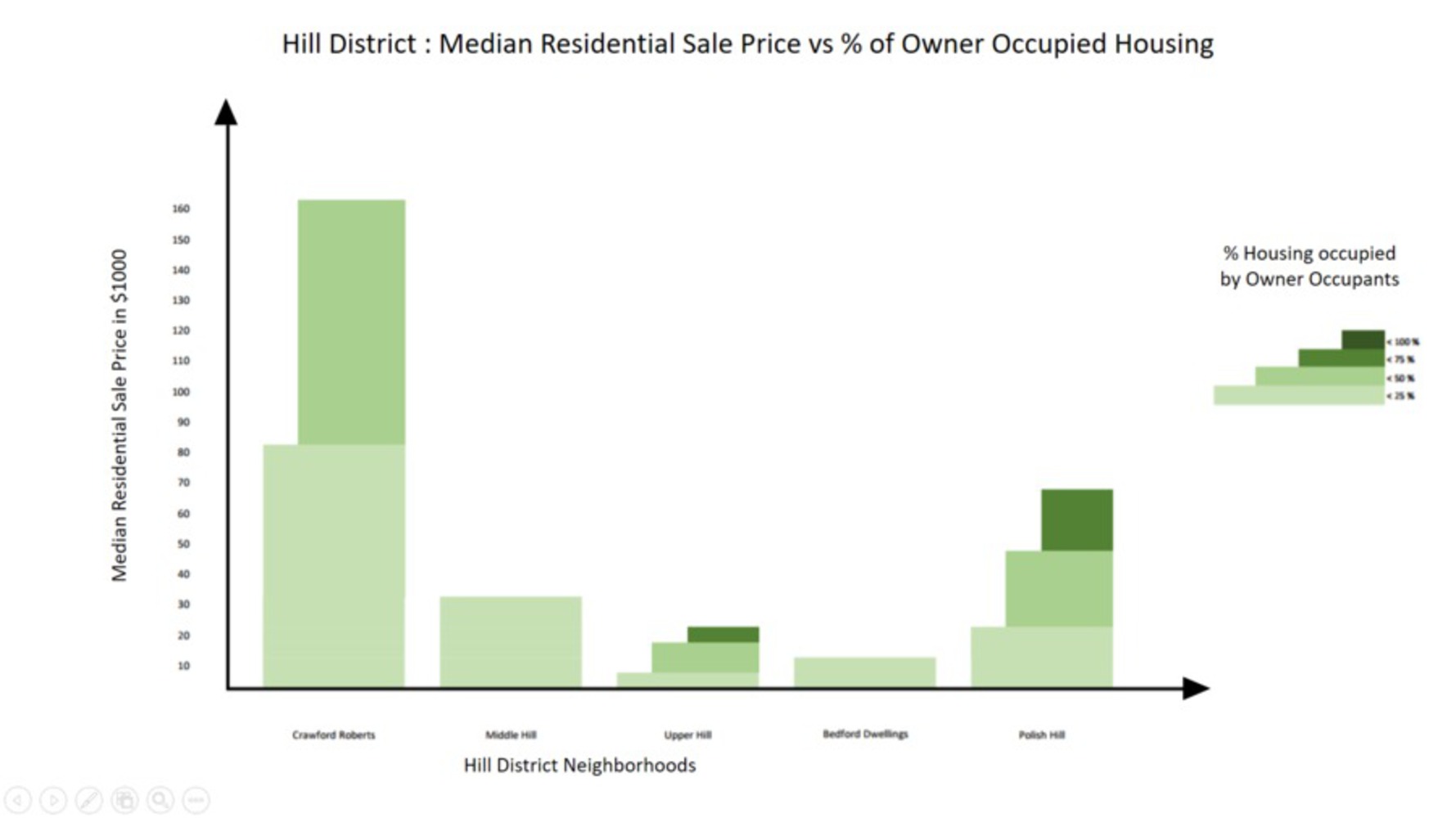Project Motivations
Data Category Chosen : Real Estate
Having spent most of my time here in CMU working on real estate projects, this seemed liked an obvious choice and it also aligns with my career interests.
Data Set Chosen : Market Value Assessment data 2016 for Pittsburgh
This data available on WPRDC is very valuable as it gives us an insight into cause and effects of property assessment values across the city. It could be used to also decide where (neighborhood) to put your project in and the expected future value of that property. (https://data.wprdc.org/dataset/market-value-analysis-urban-redevelopment-authority)
Area Chosen : Hill District
The Hill district is a collection of five neighborhoods and presents a unique opportunity to compare neighborhoods with widely varying income levels and housing standards.
Visualization Type Used : Data Portraits - Author Lines (https://www.connectedaction.net/tag/author-lines/)
This type of data seemed to be better visualized by Data Portraits as 3 different dimensions could be easily represented and understood. This form could also portray characteristics in addition to the two dimensional comparisons on the map. The visualization seemed interesting and at the same time, easy to understand.
Below are three images which show the raw data-set, data dictionary and simplified data respectively:





